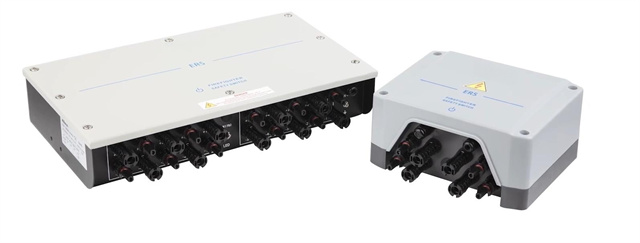Author:BLD Solar Energy SystemFROM:Solar System Converter Manufacturer TIME:2023-08-18
With the increasing demand for clean and sustainable energy sources, the solar industry has experienced rapid growth in recent years. Photovoltaic (PV) systems, which convert sunlight into electricity, have become a popular choice for both residential and commercial applications. One area that has garnered attention in the solar industry is the implementation of module level rapid shutdown technologies. This article explores the applications of module level rapid shutdown and its significance in enhancing safety and efficiency.

When it comes to solar installations, safety is of utmost importance. Module level rapid shutdown (MLRSD) is a technology designed to improve safety by reducing the risk of electrical shock and fire hazards. MLRSD involves the use of power electronics devices, such as rapid shutdown boxes or optimizers, which are installed at the module level. In the event of an emergency or maintenance situation, MLRSD allows for the quick and safe shutdown of individual solar modules or strings, minimizing the risk of electric shock for first responders, maintenance personnel, and firefighters.

In addition to safety benefits, module level rapid shutdown technologies also contribute to the overall efficiency of solar installations. MLRSD allows for more flexibility in system design and installation. Traditional PV systems require the entire array to be connected in series, meaning that the performance of one module can impact the output of the entire system. With MLRSD, each module operates independently, allowing for easier identification and troubleshooting of performance issues. Furthermore, MLRSD helps minimize power loss due to shading or module mismatch, resulting in increased energy production and improved system performance.

The applications of module level rapid shutdown extend beyond just safety and efficiency improvements. MLRSD technologies are particularly beneficial for rooftop solar installations, where accessibility and space can be limited. By allowing for module-level shutdown, MLRSD enables easier maintenance and troubleshooting, reducing downtime and maximizing the overall performance of the system. Moreover, MLRSD aids in compliance with industry regulations and codes, ensuring that solar installations meet the required safety standards.
In the future, the adoption and development of module level rapid shutdown technologies are expected to continue growing as the solar industry strives for improved safety, efficiency, and performance. Advancements in MLRSD devices, such as integrated solutions and smart communication capabilities, will further enhance the functionality and effectiveness of this technology. As solar energy becomes increasingly integrated into our daily lives, module level rapid shutdown will play a crucial role in creating a safer and more efficient solar-powered future.
In conclusion, module level rapid shutdown technologies offer significant benefits to the solar industry. By prioritizing safety, MLRSD ensures that solar installations can be quickly and safely shut down in emergency situations. Additionally, MLRSD enhances efficiency by allowing for individual module operation and minimizing power loss. With expanding applications and promising future prospects, module level rapid shutdown is paving the way for a safer, more efficient, and sustainable solar industry.
